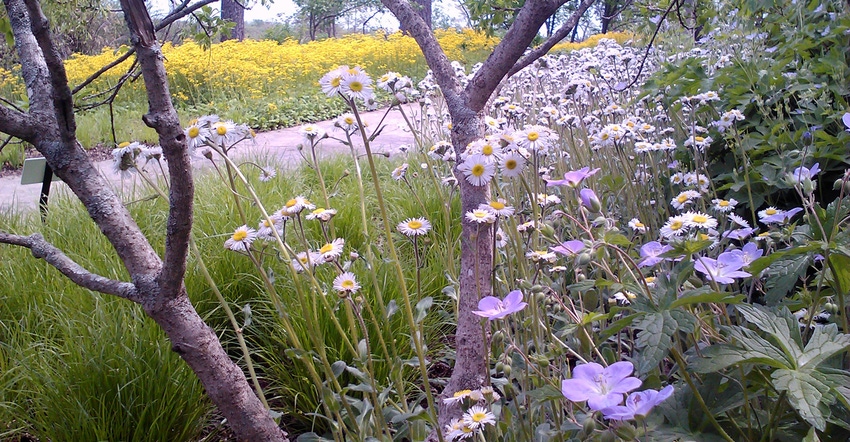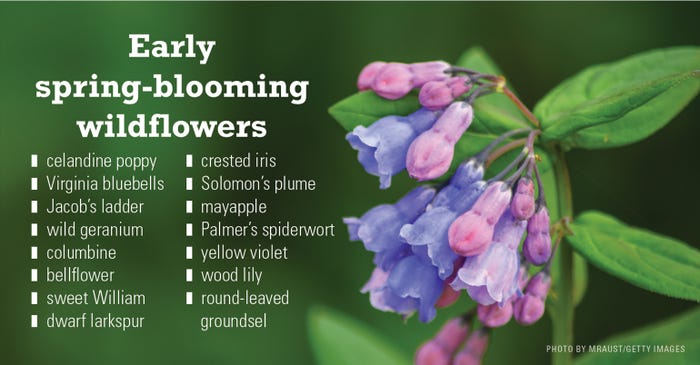January 21, 2022

There is a correlation between winter freeze and spring bloom.
When winters are consistently cold and the ground is frozen for longer periods, spring floral display is at its best. When winters are warmer, and the ground is mostly wet, rather than frozen, early spring flower displays suffer. Bloom quality and plant vigor decline after unusually warm winters.
One reason behind this is that soil drains poorly in this cool, unfrozen environment. Persistent wet soil causes enough root rot to affect plant performance, but usually not enough to kill it.
It’s not warm enough to dry the soil, and not cold enough to keep it frozen. Also, plants are not actively growing and pulling moisture out of the soil. The problem gets worse when we have rainy winters.
What is a gardener to do? Not much, unfortunately.
Winter garden tips
Keep leaves from gathering into piles in the areas where you have wildflower displays. Spread the leaf litter out evenly, or remove some of it in the fall, when the leaves first come down. Leave them alone for the remainder of winter and spring.
Remember that keeping leaf litter is important to promote overwintering insects such as luna moths and great spangled fritillaries.
Also use the right plant in the right location. If you have poorly drained, moist soil shaded by trees, plant moist-loving shade species such as rose turtlehead, purple Joe Pye, garden phlox, sensitive fern, red buckeye, hop sedge and golden groundsel. These plants thrive when soil stays wet.
Warm weather affects blooms
In a changing world where winters are milder and wetter, expect surprises.
As I write this in early January, Ozark witch hazel is in full bloom. It normally blooms in February or March. Earlier in the winter, I saw an unusual number of butterflies and bees flying around.
Spring wildflower displays change from year to year because they are at the mercy of winter weather. There are many early spring-blooming flowers that may not be as vibrant this year because of a warm winter. Check out the table below.

Just remember, when wild geranium and celandine poppy bloom poorly, it isn’t your fault. Try to be patient and look on the bright side, because they will probably come back a year or two later, blooming like crazy.
Woodbury is a horticulturalist and curator of the Whitmire Wildflower Garden at Shaw Nature Reserve in Gray Summit, Mo., where he is an adviser to the Missouri Prairie Foundation’s Grow Native! program.
About the Author(s)
You May Also Like




